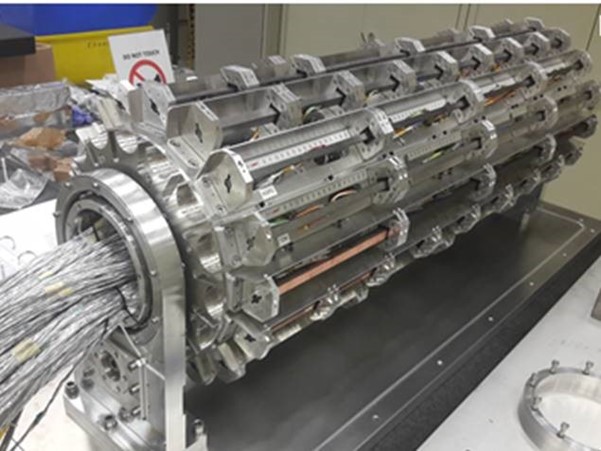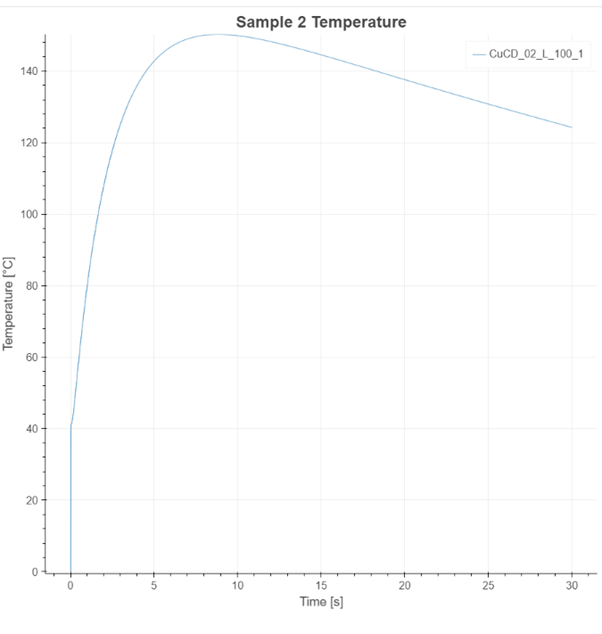After meticulous planning and preparation, the MULTIMAT 2 experiment was installed in HiRadMat (High Irradiation to Materials), and now it is ready for an intense week of material testing.
Thanks to the efforts of BE-CEM, SY-STI and EN-MME, both the test and data acquisition went according to plan.
HiRadMat is a user facility in BA7 designed to provide high-intensity pulsed beams from the SPS to irradiate material samples testing everything from material samples to accelerator components. The experiment explores the behavior of advanced materials for use in beam-intercepting devices, currently with the focus on the HiLumi Upgrade of the LHC.
In the past, several tests were performed on different material samples (HRMT-14, HRMT-36, HRMT-09, HRMT-23, HRMT-27), which was key to aid in validating the principles of the technical and mechanical solutions implemented in equipment for the current LHC.
With HL-LHC in the horizon, the requirements have yet again changed. The beam energy is stronger, and the materials used in the HL-LHC must withstand even harder strains to be deemed as fit for the more stringent requirements of our future accelerator.
Existing material, based on in-house coating techniques and new prototypes for HL-LHC was tested to see if they match the expectations of our future collider.
To validate the samples, the following test where performed:
- the MoGr grade produced by Nanoker (ES) for the LS2 collimators series.
- the molybdenum coating performed by DTI (DK) by means of HIPIMS technique.
- molybdenum and copper coatings performed by HIPIMS on isotropic graphite, which are the current plans B/C for the LS3 production.
- additional carbide-ceramics with properties comparable to MoGr, but with lower production cost.
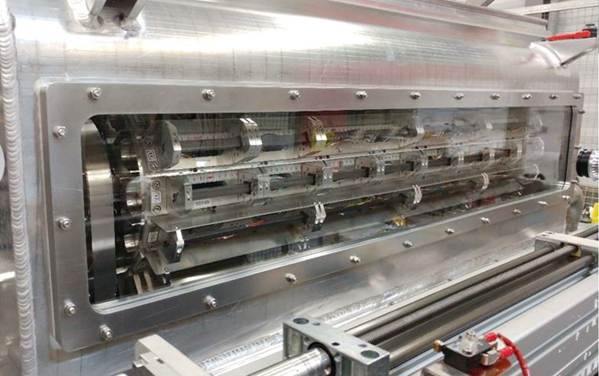
The MULTIMAT 2 test bench installed in HRMT-36 was repurposed and re-used. MULTIMAT 2 It is basically a tank, cooled with inert gas, containing a rotating barrel with 16 target stations. Each stations holds an individual material specimen which can be moved in front of the beam coming from SPS.
The barrel, which in principle functions much like an old-style revolver, aligns the specimens in front of the target line using stepper motors, resolvers and LVDT’s using a 2 degree-of-freedom actuation system.
The material specimens installed in MULTIMAT 2 has a simple shape (cylinders or bars), which when irradiated, generate known and easy to measure stress waves and failure patterns.
The current MULTIMAT 2 test, based on the experience from HRMT-36, was focused on measuring transversal stress waves and to detect know mechanical defects.
For the analysis, both online and post-irradiation measurement methods are foreseen. In addition to the stepper motor-based movement system, the samples are measured using strain gauges, laser-Doppler vibrometer, temperature probes, high-definition camera.
Movement control
The MULTIMAT 2 target was controlled using a dedicated 5 axis control architecture called “StepperAxis” developed by BE-CEM. A dedicated LabVIEW based high level interface was made for the operators top easily move and position the targets.
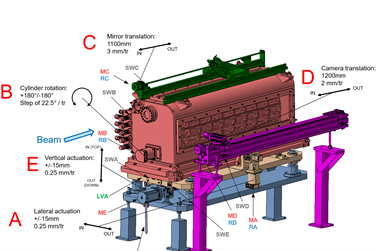
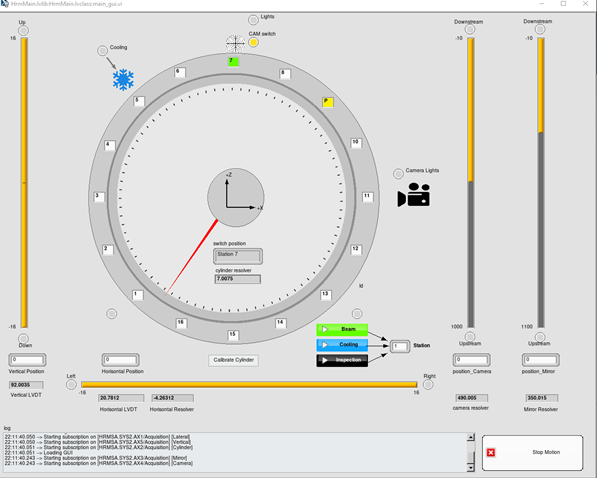
Data acquisition system
A dedicated fast data acquisition system has been provided to EN-MME. A real time application for data acquisition running on a PXI has been developed that communicates with another host applications in LabVIEW using CMW. The chassis is equipped with 12 fast acquisition cards, PXIe-6124, allowing to have up to 48 strain gages recorded at 4MHz simultaneously. The chassis also contains a card dedicated to temperature acquisition, the NI PXIe‑4357 input module provides integrated data acquisition and signal conditioning for 2‑, 3‑, or 4‑wire resistance temperature detector (RTD) measurements.
The application stored the data continuously at 100Hz and react on the SPS extraction trigger to acquire at 4MHz during 50ms. Data are stored in TDMS files locally and pushed to EOS for post-analysis.
